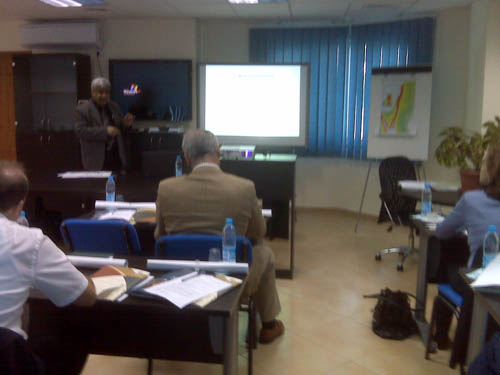“Disaster Risk Reduction” Session conducted by Dr. Jalal Dabeek at the International Relations Office in Ramallah
On April 12th, 2011 the International Relations Office of An-Najah National University hosted a presentation on disaster risk reduction to an assembly of foreign consulate offices and representatives. Speaking on behalf of the University was Dr. Jalal Dabeek, the director of An-Najah’s Scientific Centers and an expert in Earthquake Engineering and Risk Assessment. Dr. Jalal, who is also the director of the Earth Sciences and Seismic Engineering Center at the University, focused his presentation on risk evaluation, communication and management at a general level before speaking directly about issues facing Palestine’s response to large scale events and crises.

The first aspect of Dr. Jalal’s presentation was intended to familiarize the honored guests with the methodology, in which governments prepare for natural disasters. Dr. Jalal introduced risk assessment matrices that explained how risk can be mathematically quantified for interested parties to analyze and prepare for adequately. Risk, he explained, is the result of hazard combined with vulnerability, once it has been distributed evenly by the capacity for prevention and response. While this technical process may seem daunting, understanding this interaction is a vital aspect for a community or country to properly understand disaster and emergency response for their population. Dr. Jalal conveyed the need for proper risk assessment through timely comparisons to recent natural disasters such as Japan’s earthquakes and subsequent tsunami’s and other seismological events, like Haiti.
In the latter part of the presentation, Dr. Jalal focused his expertise on earthquake preparedness in Palestine, as well as proper land use post disaster damage assessment. Using maps and data produced by the Earth Sciences and Seismic Engineering Center at An-Najah, he was able to visually relay areas of concern in the region, while demonstrating the critically important work performed by the University’s Scientific Centers for the people of Palestine. Guests at the presentation seemed extremely interested in learning more about both the risk assessment process and specific issues in Palestine, such as earthquake impact on refugee camps and international response measures.



